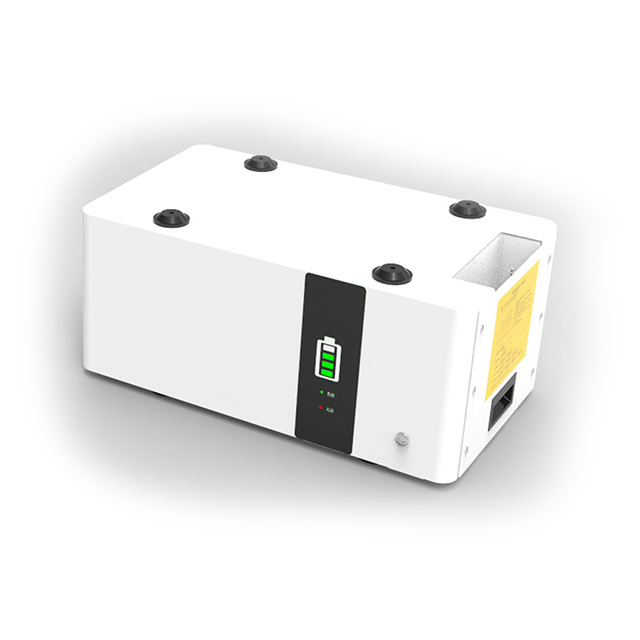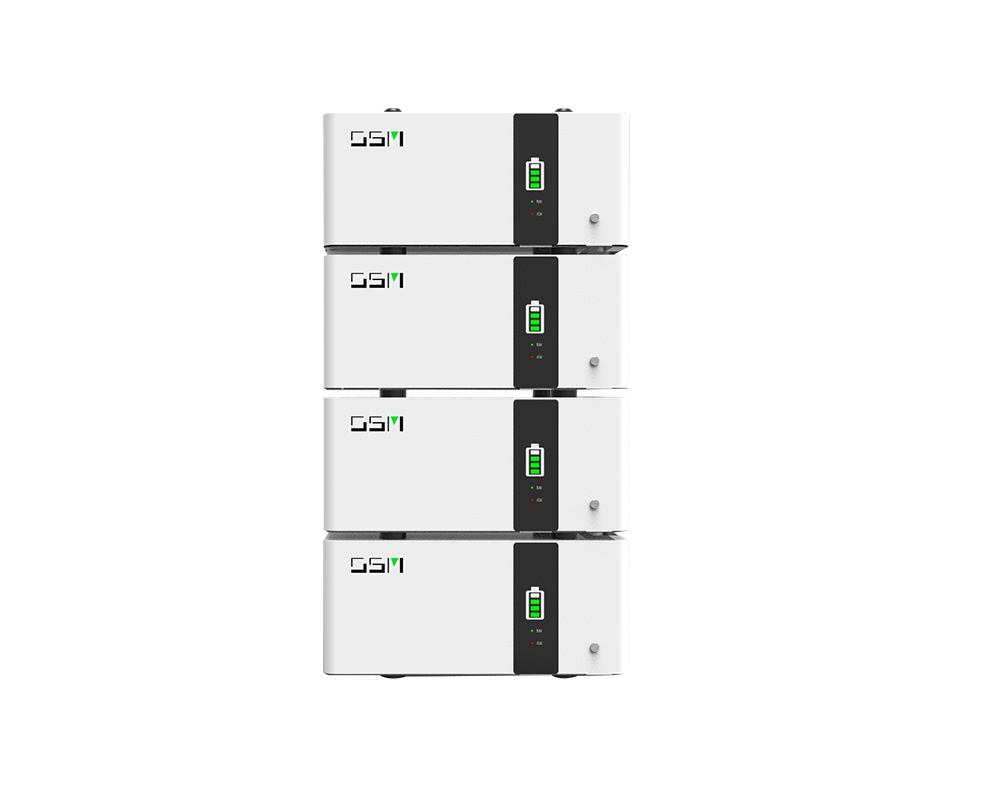About Residential Lithium storage batteries
Lithium batteries have become the mainstream choice in household /residential energy storage projects, the reason is development of lithium-ion battery technology and the rapid decline of cost, and the market share of newly added chemical batteries has reached more than 95%. Lithium iron phosphate battery became a priority choice for residential battery storage systems.
cycle life compared with other type lithium batteries, in additional, it has no memory effect. This is critical for solar power energy storage system. Because solar pv generator is not stable when it charging the batteries. In this way, residential battery storage owner no longer being limited to using only half of the stored power in a battery effectively doubles their capacity. Battery system can be charged anytime, no matter how much current the invertor and PV generated
Different from lead acid battery. The LiFePo4 battery storage system required a BMS. And it is smartly controlling the battery cells inside for charging and discharging. All is managed and monitor by the BMS. The BMS will communicate with invertor directly to make sure the completely system works consistent in a best condition. EG Solar residential battery storage systems come with communication functions. This will tell the solar controller or invertor when to charge, when stop to discharge. All battery state and information are monitor in real-time. This is very important when using battery systems with solar arrays PV system, because the inverters in a solar array system require power to begin making power, regardless of whether they are tied to the grid or not.
EG Solar household battery Storage system
If you are a house owner, EG Solar residential batteries is the best choice. It is simple installation, covered with full warranty. The most important you going to benefit from make order directly from the manufacturer; If you are installer company or residential energy storage system distributors. EG Solar is also the best choice. Because we provide very small MOQ for OEM order. Now contact with EG Solar and build your own brand from EG Solar low voltage production line. With EG Solar Top innovators in lithium-ion battery technology, you’re backed by the highest quality products available.
Why need home electricity battery storage?
- Peak-Shaving Function
In one sense, store electric energy when it is surplus and output stored electric energy after inverting when it is insufficient. This is the basic function of storage system–Peak-shaving function. - Independent inverting function in emergency
When the power grid loses electric energy, storage system will be used as independent inverter power supply and provide AC electric power for important load constantly to ensure user’s requirement. - Accepting Debug Command From Power Grid Flexibly
Storage system will exchange information with Remote Terminal Units (RTU) of power grid and Supervisory Control And Data Acquisition (SCADA) flexibly and conveniently, it will accept dispatch from automatic dispatch monitoring system of electric grid, to realize telesignalling, telemeter, remote control and remote transfer. The whole process will abide by MODBUS RTU. The communication media maybe wireless or wired. - Dynamic, static power grid support and reactive power compensation

Storage system will achieve kinds of functions according to power grid dispatch command, which includes items as follows:
- Provide needed active power for power grid;
- Provide needed reactive power for power grid;
- Realize low voltage cross, and enhance the stability of power grid.
Best battery for home energy storage

48V mobile energy storage lithium ion battery
- Usage scenario: home, hospital, construction site
- Voltage platform: 48V
- Capacity: 100Ah
- Energy: 5000w
- Times used: > 2000 times
- Battery system: Lithium iron phosphate

EG Solar residential solar power battery storage
- Usage scenario: family residence, shopping mall
- Voltage platform: 48V
- Battery modular: 48v 50Ah
- Battery capacity: up to 24kwh
- Times used: > 2000 times
- Battery system: LFP Lithium ion battery
EG Solar 48V 500AH energy storage lithium ion battery can be connected in series and parallel
- Usage scenario: farm, construction site, factory
- Voltage platform: 48V
- Battery modular: 48 volt 50 Ah
- System voltage: Up to 768 volt
- Times used: > 2000 times
- Battery system: Lithium iron phosphate

EG Solar residential solar power battery storage
- Usage scenario: factory, construction site, school, hospital
- Voltage platform: 48V
- Energy: 20kwh/ 10Kwh/24kwh
- Battery modular: 51.2v 100Ah 3.5U battery rack
- Times used: > 2000 times
- Battery system: Lithium iron phosphate
How much storage does my home need
Just like solar-only systems, the size of your rechargeable solar battery system is determined by your unique energy needs and habits. Factors such as the amount of electricity you use at home and the devices and appliances you want to back up will play a key role as you select the right battery storage solution for you. Normally, if the solar power just for illumination, You will need a less then 5Kwh home battery energy system. If there is a air-condition, or other electric powered stove. You probebely need at least 5Kwh or 10kwh more.
For detail calculations can get consultant from our people. They will glad to help.

OEM Custom household battery storage

How is Home Energy storage works
EG Solar ESS Advantages
- Modular structure ensuring easy operation andmaintenance;
- Flexible arrangement for various voltage levels and storage capacities;
- Design of the battery management system (BMS) in three levels (module, rack and bank), ensuring greater control andmonitoring of the system;
- High reliability and safety provided by the chemistry used;
- Long service life;
- Optimized dimensions ensuring high energy density and reduced weight;
- Flexible and fast transportation and implementation;
- Lower maintenance in comparison to other batterychemistries.
EG Solar Residential Energy Storage Systems (ESS)
EG Solar Residential Storage Solutions (ESS) offer a wide variety of products to create and manage resilient energy infrastructures at an optimal cost. ESS offers two primary use cases. The first is creating utility-independent, solar-powered homes (residential ESS). On a larger scale, the second use case is utility supplementing generated power during periods of high demand (utility-scale ESS).
Older generation residential solar energy systems are tied to the utility power grid via inverters, which convert power from solar panels to AC electrical power during daylight hours. Marketable excess power might be sold back to utility companies. However, during the hours of darkness, the end-user is relying on the utility’s electricity supply. Utility companies are aware of these limitations and adjust their pricing models accordingly. Residential customers pay based on “time-of-use” rates, which are higher when solar power is not available.
Behind-the-meter ESS is utilized at this point. The electricity that is collected via solar panels charges batteries, the energy is then stored. When using these batteries with an inverter, the demand for AC power can be fulfilled at any time.


48100 comes with two different product models, 48100P and 48100S, to support both P is a battery unit allowed you parallel more unit to increase the system capacity. While P will possible to connect in Series to increase the battery system DC voltage.
Beside the battery system. EG Solar also offer related solar charging controller based on different voltage and current. Custom can easy just connect all component together and start to use the whole system.
Here is link for our Solar charging controller. If you still have some questions, please feel free to contact our sales Consultants. You can email or call us directly based on contact page information.
BATTERY MANAGEMENT IN ESS
In ESS, a battery management system fulfills two main functions, namely battery protection and battery monitoring.
Battery Protection
Detecting a variety of fault conditions and protecting the battery from damage during the charging and discharging process is the main purpose and functionality of a BMS. Operating a battery outside of its specifications causes damage to the battery cells and leads to battery failure, producing maintenance efforts, and significant cost impact. Batteries must be closely monitored during charging and discharging to avoid these negative effects.
Protection must be provided against:
- Overvoltage/undervoltage
- Inrush current
- Reverse currents
- Short circuits
Those designing with EG Solar solutions will benefit from:
- Wider SOAs
- Short-circuit protection with higher peak current rates
- Turn-on and turn-off solutions tailored to application requirements
- Cost-efficiency resulting from a reduced BOM count and more effective parallelization solutions
Battery Monitoring
A battery must be monitored systematically, to protect it. The battery management system is in charge of monitoring each of the cells in a battery pack and ensures that they are operated within the safe operating range. Various parameters, such as cell voltage, SOC, state of health (SOH), and the temperature, have a decisive impact on the performance, safety, and lifetime of batteries. A battery needs to be protected against possible external faults that would put the system in danger. Protecting the battery from damage during the normal function of the system (charging and discharging process) is one of the main functionalities of a BMS. Within Infineon’s product portfolio, designers will find the right devices to disconnect the battery system in case a fault is detected, thereby protecting its value. They will also help to detect system faults like overcurrents and short circuits
Advanced Battery managment System
The battery is the core energy storage device of the system and needs to be monitored online status in real time, so the importance of BMS is self-evident. In the BMS management system, BCU real-time communicates with
- CAN bus and BMU to get monomer voltages, cabinet temperature, insulation resistance and others
- Current sensor to collect charge and discharge current and dynamic calculation SOC
- Touch screen to display relevant data
The BCU calculates and analyzes all the information of the battery pack and then intelligently manages the system, communicating with the independent CAN bus and achieving the secondary protection of charge and discharge through a relay. The latter ensures an effective isolation for strong electricity and weak electricity, meets customer’s demand for diverse security control and guarantees a stable and efficient operation of the system.


BMS / BMU are the Core Technology
Li-ion cells should always be used with a protection circuit to prevent the cell from over charging or over dis-charging. Choosing the correct circuit and applying it appropriately is vital to the longevity your batteries and your own safety. EG Solar test each Cells and BMS/PCB/PCM before manufacturing and promise it is functional and safe.
BMS / PCB / PCM is the “heart” of Lithium battery pack. BMS (Battery Management System) is any electronic system that manages a rechargeable battery (cell or battery pack), such as by monitoring its state, calculating secondary data, reporting that data, protecting the battery, controlling its environment, and balancing it.
Outstanding Performance of BMS
There are six main objectives common to all Battery Management Systems:
● Protect the cells or the battery from damage.
● Cell balancing.
● Prolong the life of the battery.
● SOC determination.
● Incorporated functions: Data recording and communication (RS232/RS485,CAN, Bluetooth, SNMP and Ethernet).
● Maintain the battery in a state in which it can fulfil the functional requirements of the application for which it was specified.







